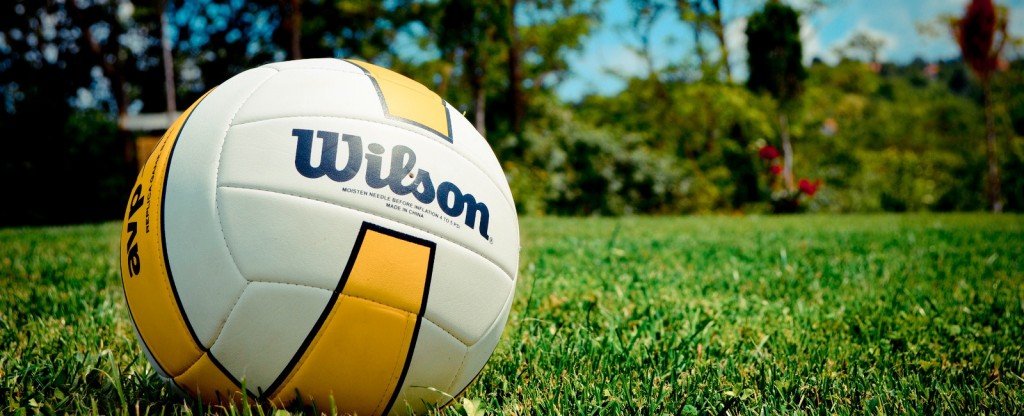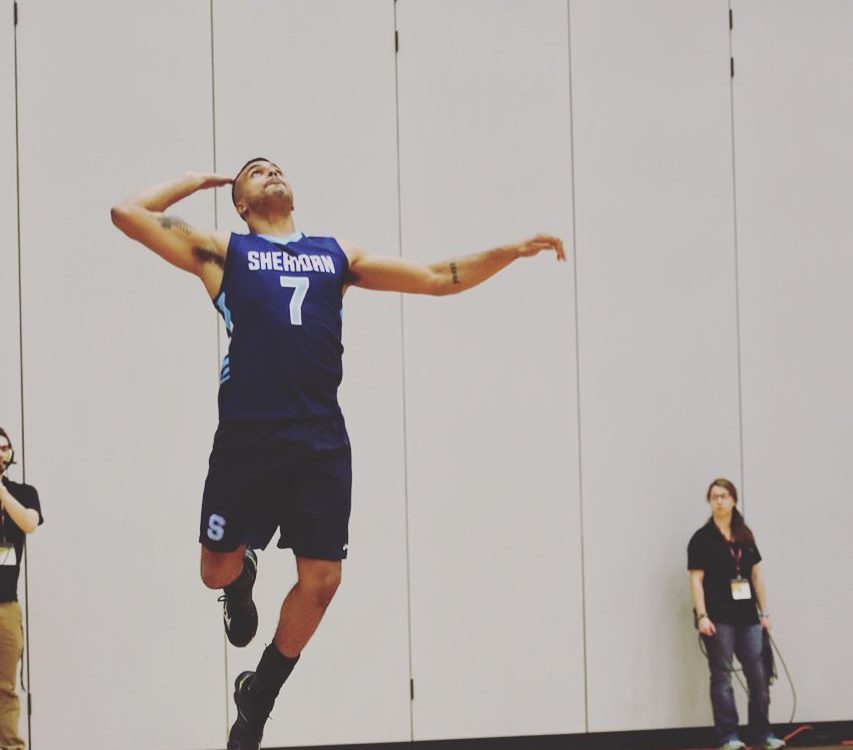
OVA superstar Parvir Jhajj is a Part of the Coaching Staff
October 5, 2017Volleyball Off-Season Training Tips

After volleyball season finishes, the so called, the “transition period” begins. During this period a volleyball team can get new volleyball players. Now, it’s time for volleyball players to take a deep breath and relax. However, the end of the season doesn’t mean that volleyball players don’t have to do anything.
The big question is – what athletes usually do when a volleyball season finishes? It’s worth noting that amateur volleyball players usually choose to have a rest after the season ends. However, professional volleyball players prefer to train hard all year round.
It’s fair to say that off-season period provides athletes with great training opportunities. In reality, volleyball players can’t spend too much time on volleyball training and volleyball practices because they participate in tournaments.
Volleyball off-season training allows volleyball players to polish their skills. Volleyball players can focus on increasing a vertical jump, improving explosiveness, training muscles, recovering from injuries, doing cardio workouts as well as doing strength and conditioning exercises and so on. Volleyball athletes can also take advantage of the visualization technique.
This blog post concentrates on volleyball off-season training. Obviously, there are many things volleyball players can do to get better after a volleyball season. Check out our training tips, work hard and prepare yourself for the next volleyball season in the best possible way.
Try Different Sports
It’s a great idea for athletes to diversify their training program and forget about the sport of volleyball for a certain period of time. However, you should never forget about physical activity. So, after a volleyball season finishes you can try other types of physical activities. After the season, it makes a lot of sense for volleyball players to try such sport activities as bicycling, hiking, running, swimming and many others.
Volleyball athletes can also try to play other ball games such as basketball, rugby, tennis or soccer. What is great about these ball games is that they are very similar to the game of volleyball and have a lot of things in common.
There is no doubt that athletes will be able to get a number of important advantages if they play ball games during the off-season period. It’s important to know that playing various ball games leads to much better strength, endurance, hand-eye coordination and footwork. However, the most important thing is that athletes will be able to forget about the game of volleyball and relax for a while.
Cardio Exercises
It’s correct to say that volleyball is a very fast game. While playing the game of volleyball you need to act fast and effectively. It’s widely known that doing cardio exercises has a huge positive impact on volleyball endurance. That’s why athletes need to do cardio exercises regularly.
That’s why cardio exercises are incredibly important for every volleyball player. Among the best cardio exercises for volleyball players are: plyos and sprints. You should also focus on circuit training. All of this helps athletes improve volleyball endurance.
Building Core Strength
You should know that off-season training gives athletes a good chance to build core strength. So, after the season finishes it’s time for volleyball players to focus on different types of strength exercises. Stability exercises (such as bridges and plunk workout) have to be a part of volleyball player’s off-season training program.
You should do a 3-minute nonstop plunk workout. First of all, you need to go right down to the mat and take a plunk position. Then, hold that for about 30 seconds. After that, you need to start raising and lowering a foot.
Keep in mind that you may find it challenging to do plunk workout at the beginning. So, if you feel that you need to take a break, just do it. However, you should try your best to do a 3-minute plunk workout without any breaks.
Volleyball players choose to pay a close attention to training their muscles after the season finishes. First and foremost, training muscles will help you prevent different types of volleyball injuries. On the other hand, training muscles has a profound positive impact on volleyball player’s performance.
A famous strength and conditioning specialist from Colorado Springs, Ryan Rogers, recommends volleyball athletes to do the following exercises: dumbbell travoltas, dirty dogs, lateral band walks as well as lateral band walks.
Training Explosiveness and Increasing a Vertical Jump
Explosiveness is very important thing for a volleyball player. On the other hand, a volleyball player should constantly work hard to increase his vertical jump. Explosiveness as well as high vertical jump are crucial both for attackers and defensive volleyball players.
Oftentimes, athletes can’t spend enough time on training explosiveness and increasing a vertical jump during the volleyball season. However, they can focus on these two important aspects during the off-season.
Ryan also recommends volleyball athletes to include quality plyometric exercises into a volleyball off-season training program. The expert notes that athletes need to do plyometric exercises immediately after a warm up period. He says that medicine ball overhead throws and skater plyos are the best exercises for training explosiveness and increasing a vertical jump.
There are many other great jumping exercises that volleyball players can do to increase their vertical jump. These include: box jumps, depth jumps, jump squats, shock jumps, standing vertical jumps, tuck jumps as well as weight jumps. It’s worth noting that doing this type of jumping exercises on a regular basis will certainly help you jump much higher over time.
It’s crucial for you to know that jumping exercises need to be done only when a volleyball player is not injured. Therefore, if you have been injured recently then you definitely need to consult with your doctor. Ask a doctor if you should or shouldn’t do jumping exercises.
Do you feel pain when doing the exercises for improving explosiveness and increasing a vertical jump? If so, stop doing this type of exercises as soon as possible and contact a physical therapist immediately. By doing so, you will be able to prevent injuries from happening.
Mental Imagery
There has been a lot of talk about the importance of mental imagery. It’s clear that visualization delivers multiple important benefits to volleyball players. There is the evidence that visualization helps volleyball athletes master their skills and improve their strategy. Obviously, visualization is something that volleyball players need to do on a regular basis.
It’s a great idea to visualize before volleyball games and volleyball practices. Let’s imagine that you are an attacker. In this case, you’ll need to imagine how you organize your attack and then imagine how you carry out an attack hit. If, for example, you are a defensive volleyball player then you obviously need to visualize how you prepare for blocking and how you block the opposite team’s attacks.
Oftentimes, volleyball players are very busy during the season. Some athletes don’t want to visualize because they get tired after matches and practices. That’s why volleyball athletes don’t spend too much time on visualization. However, you will certainly have much more time after the volleyball season finishes.
Recovering from Injuries
It may take a long time for a volleyball player to recover from an injury. So, if an athlete has been injured then he/she obviously will have to miss volleyball practices as well as volleyball competitions for a certain period of time. By doing so, an athlete will be able to avoid being reinjured in the future.
Any type of breaks certainly has a huge negative impact on volleyball player’s sport career and performance on the court. In other words, if an athlete misses volleyball matches and volleyball practices then he/she is likely to perform well on the court.
It’s no surprise that a good rest is incredibly important for preventing reinjures. So, an injured athlete has to make sure that he/she has spent enough time to recover from injuries. However, injured volleyball players usually prefer to return back to the game of volleyball as soon as possible. As a result, reinjures happen. When the season is over – an athlete has a splendid opportunity to refresh, rest and relax. And of course, all of this helps athletes recover from injuries successfully.
Thank you so much for reading our blog post. Off-season training is something that helps athletes improve their volleyball skills and prepare for the next volleyball season successfully. Obviously, you should try our tips and get the most out of your off-season volleyball training program. As always, we wish you the best of luck!

